George Furbank has transformed England’s attack and should be here to stay

At Twickenham on Saturday, one team registered 522 running metres, 164 completed passes and eight clean breaks, kicking the ball 23 times. The other kicked the ball more, on 28 occasions, yet were inferior by the rest of those metrics, managing a meagre 243 running metres, completing 120 passes and recording just two clean breaks.
On the evidence of the past two Six Nations meetings between the sides, one would have expected England to be the less expansive outfit. Many suspected that they might merely implement grisly spoiling tactics to stifle Ireland in round four. Instead, two weeks after their error-ridden evening at Murrayfield, the hosts’ intrepid attack dictated terms.
Perhaps more than any other selection call, the decision to keep George Furbank as the starting full-back epitomised how Steve Borthwick was prepared to risk losing – or at to least commit errors – in order to win.
Furbank finished a neat first-phase move to score against Scotland, but spilt a couple of passes in an England display that lacked synergy. One costly drop led directly to Duhan van der Merwe’s second try. Furbank made more mistakes on Saturday. Overall, though, he personified a bold approach. Within four minutes, Furbank had inspired a superb try.
Note his position from this restart, which comes after Ireland have gone 3-0 up:
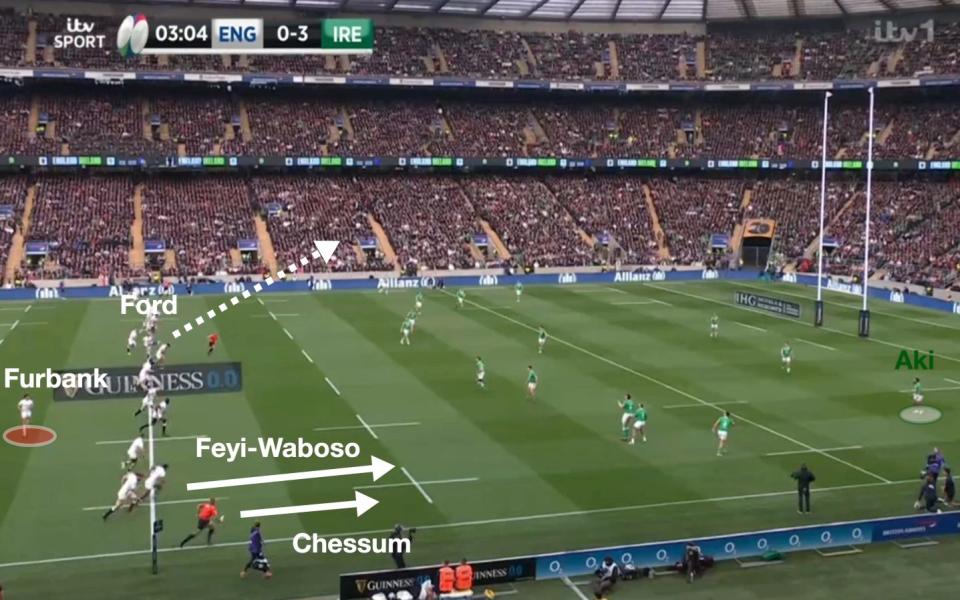
All game, England aimed these kicks towards Bundee Aki, pressurising the catcher with Immanuel Feyi-Waboso and Ollie Chessum. They then had Sam Underhill and Maro Itoje pushing up to tackle on the following phase. James Lowe would then step up to clear, ideally from a tricky angle under pressure. Sure enough, Ben Earl is able to get into the kicker’s eye-line here:
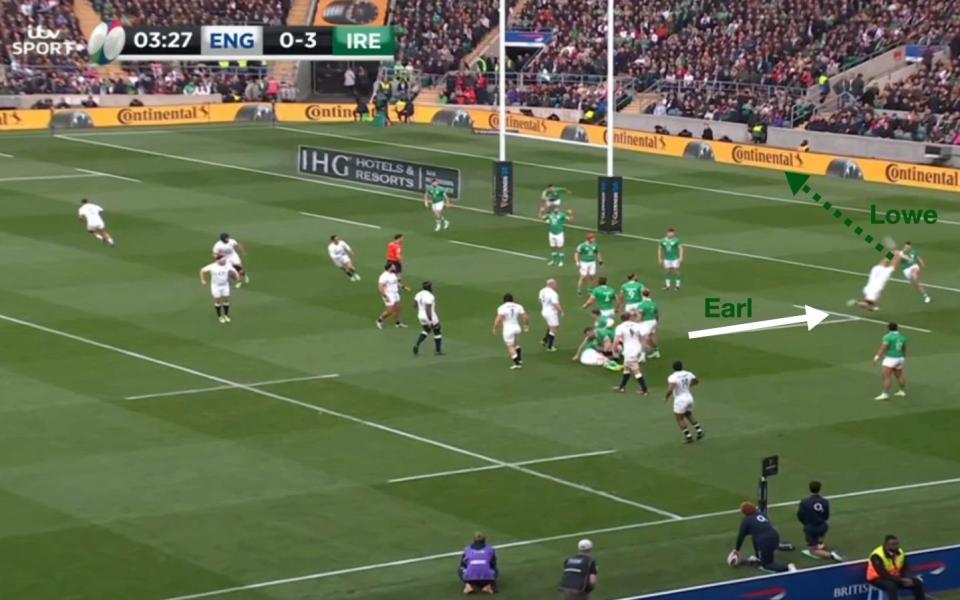
Furbank gathers near the touchline, and spears towards the middle of the pitch before feeding Tommy Freeman, who flattens Calvin Nash. George Martin and Jamie George burrow in to blast Josh van der Flier off the breakdown:

Rewinding to the point that Furbank fields the bobbling ball, look how quickly Henry Slade and Ollie Lawrence have retreated to join this kick-return. Both of them have made a beeline towards the far touchline:
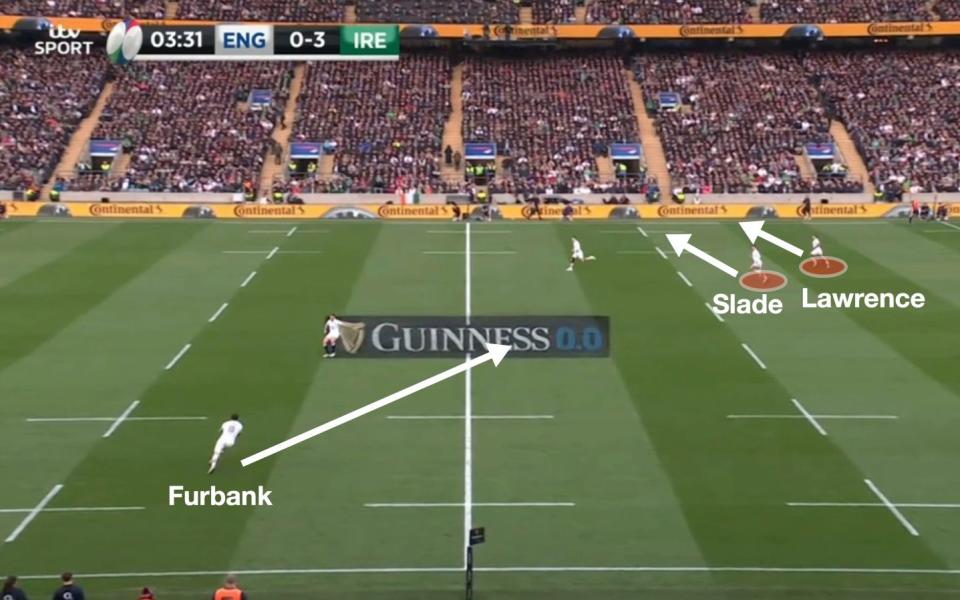
The work of Slade and Lawrence, as well as that of Furbank, pays off on the next phase. Whereas Ireland hover near the ruck, England flood the far side. Furbank peels away to drop behind George Ford and helps the hosts pick off an overlap with straight running and well-timed passes:

Furbank’s own try, which arrived in the second period, was also indebted to graft off the ball. Collectively, England were far more alive to kick-return opportunities. Furbank, Itoje and Sam Underhill are all in this screengrab as Jamison Gibson-Park clears:
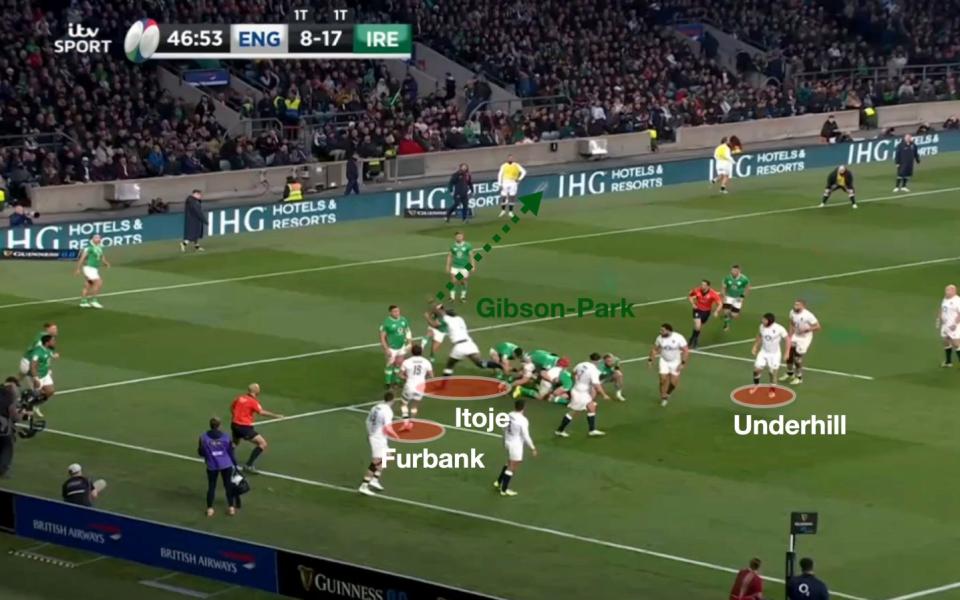
Ford catches and moves the ball in-field to Slade. Lawrence is caught in possession but offloads to Feyi-Waboso and a strong carry buys time:

The ball is recycled and, again, Ireland have bunched close to the ruck. Their defensive structure is a mess, with five players opposite a single attacker, Earl, on the blindside. England spot the space and adopt some phase shape quickly:
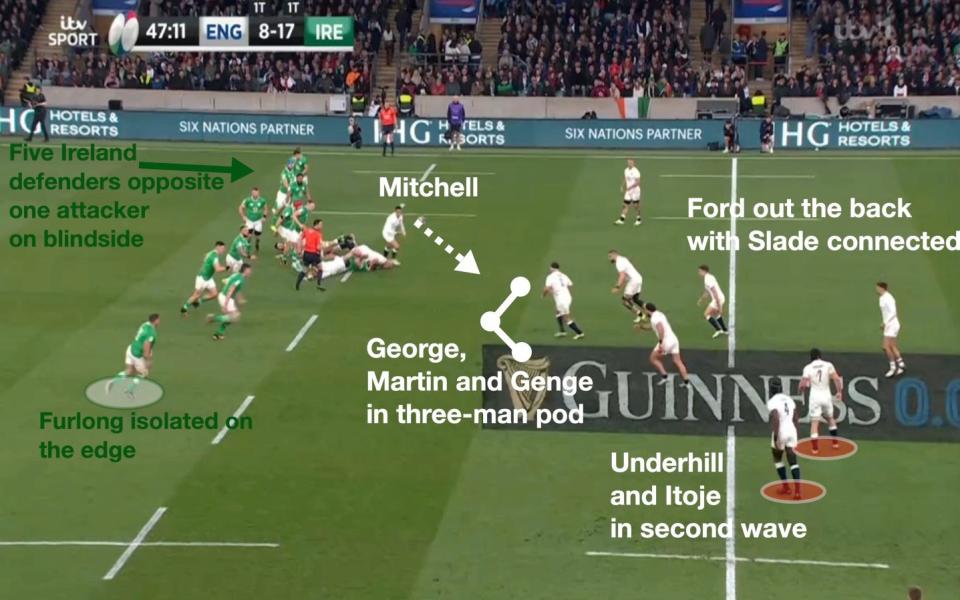
Underhill, Itoje and Furbank, no doubt an organiser from out wide, are the last three to touch the ball:
Furbank made it his aim to improve in the contact area last summer and showed a willingness to push onto the edge of the front line, outside his wings, as part of the blitz defence:
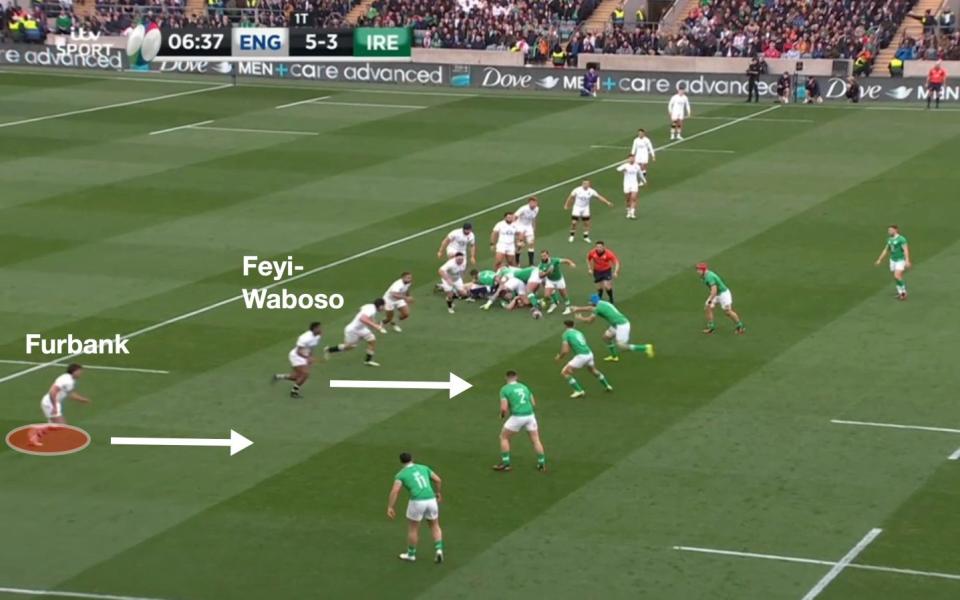
In the kicking exchanges, where Freddie Steward has been so imperious for England, Furbank was generally solid. That said, Lowe did catch him out on the verge of half-time.
Gibson-Park feigns towards the right at the back of this scrum before spinning away to Ireland’s left. Lowe sends the ball over Furbank’s shoulder, putting him in two minds over whether to catch or let it go directly out. Furbank opts to catch and steps over the touchline, conceding a line-out that led to three points for Ireland:

After half-time, Ireland scored a fine transition try of their own after Freeman failed to deal with a box-kick from Gibson-Park.
Minutes earlier, however, Furbank had contested this Ford up-and-under, helping to force a knock-on from Jack Crowley. England should have had a penalty for Tadhg Beirne playing the loose ball from an offside position:
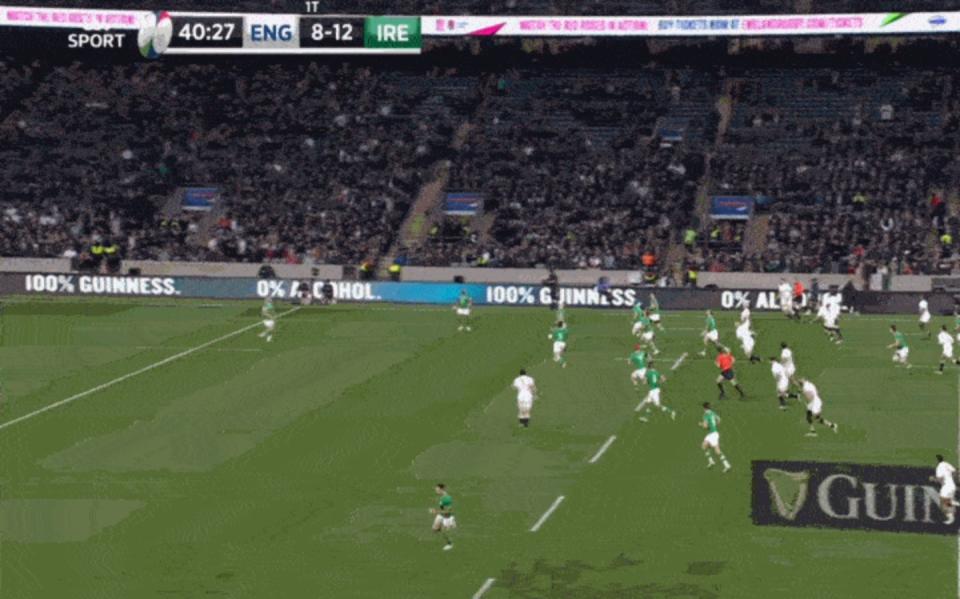
Later, in the 55th minute as tensions were rising, Furbank and Feyi-Waboso combined to win back this Crowley high ball:

Overall, the presence of Furbank certainly enhanced his team as an attacking force and seemed to embolden them as well. Here, on the back of a stolen line-out, England play to width quickly. Watch how Furbank hits the line and points Henry Slade towards space. Slade sells a dummy towards Furbank before feeding Feyi-Waboso:

When the dust settles, England’s players and coaches should be excited by the potential that they have to refine their game with this new attitude in attack. Because they had chances to score more points against Ireland.
Here, in the 10th minute, Furbank arcs behind Slade as Lawrence cuts a short line. Watch Ciarán Frawley at full-back for Ireland, who is pushing up towards the front line:
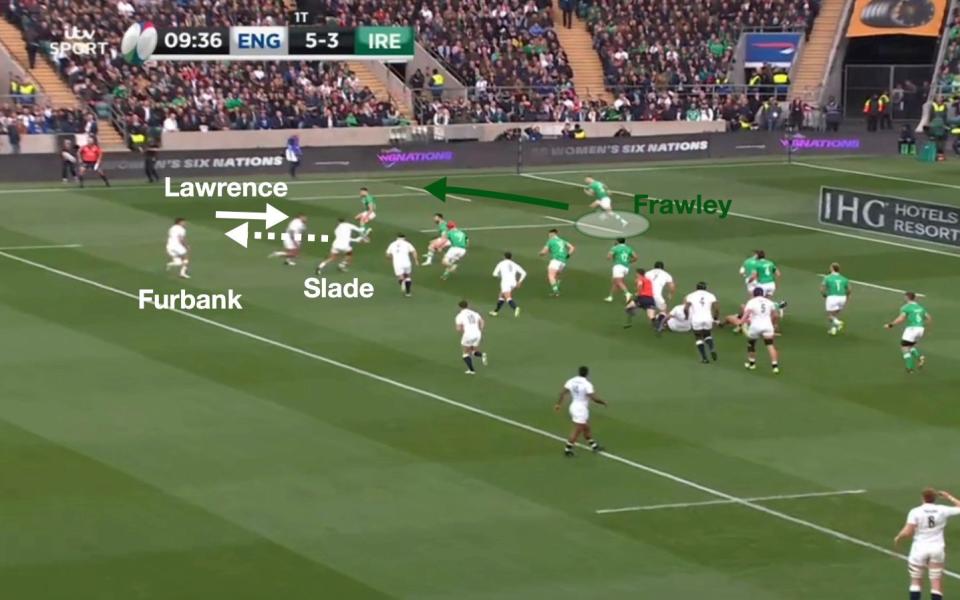
Slade pulls the ball behind Lawrence to Furbank, but the latter is crowded out and concedes a breakdown turnover to the jackalling Van der Flier:

At this point, a grubber in behind might have turned Ireland and caused serious problems:
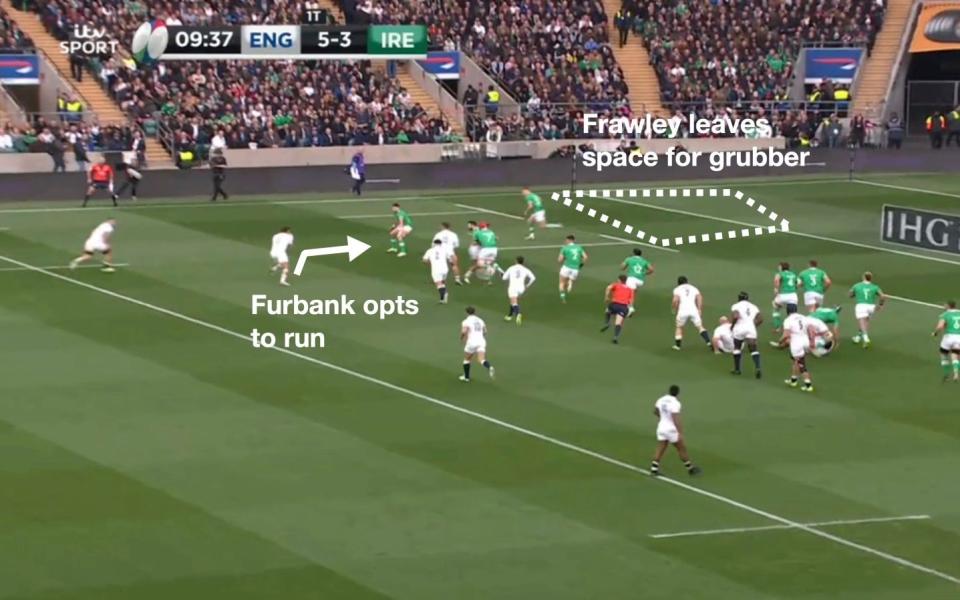
Around 14 minutes later, when Lawrence received a pass from Ford behind Underhill, Furbank almost scored himself from a cute grubber:

Just before half-time, England run a popular strike move from a line-out beyond Ireland’s 10-metre line. Earl is in midfield cutting a short line off Slade’s shoulder with Ford in behind and Feyi-Waboso arcing around from the blindside wing:
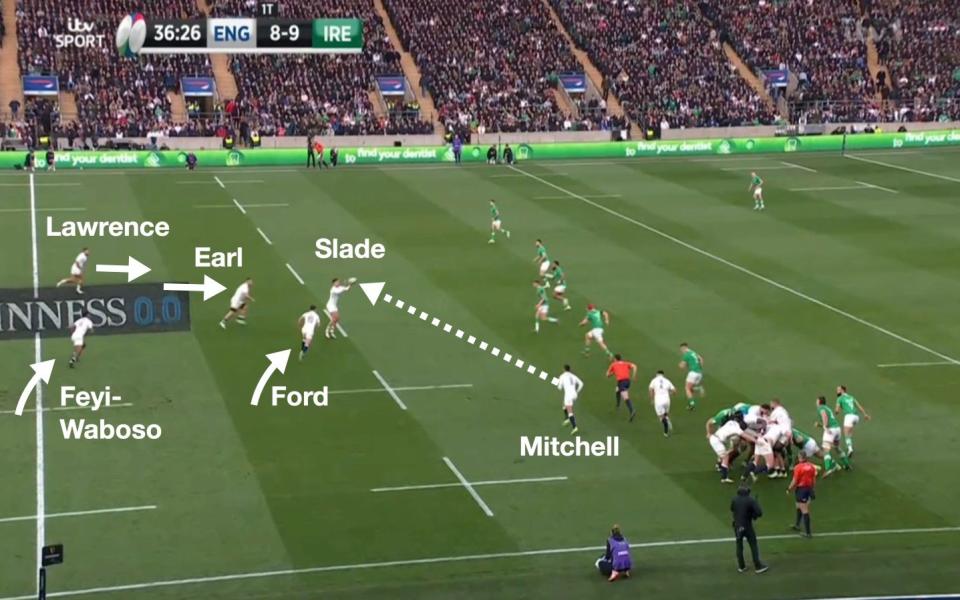
The move breaks down after Feyi-Waboso is fed behind another lead line from Lawrence and Furbank spills:

Furbank and Feyi-Waboso immediately discuss the scenario:
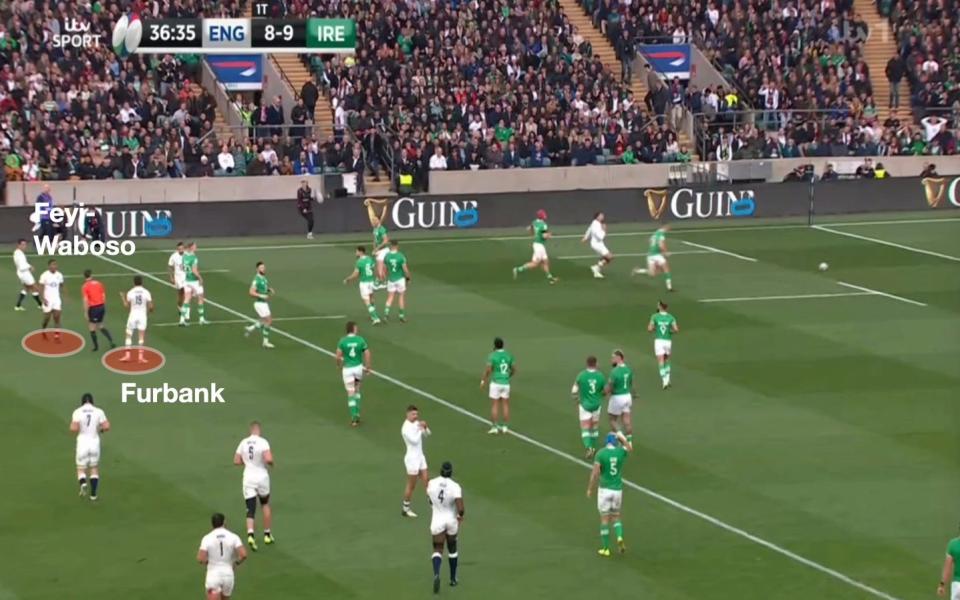
From the former’s body language, it looks as though he wanted Feyi-Waboso to straighten from this position or to play an earlier pass. Other options would have been a miss-pass directly to Tommy Freeman or a kick in behind Frawley:
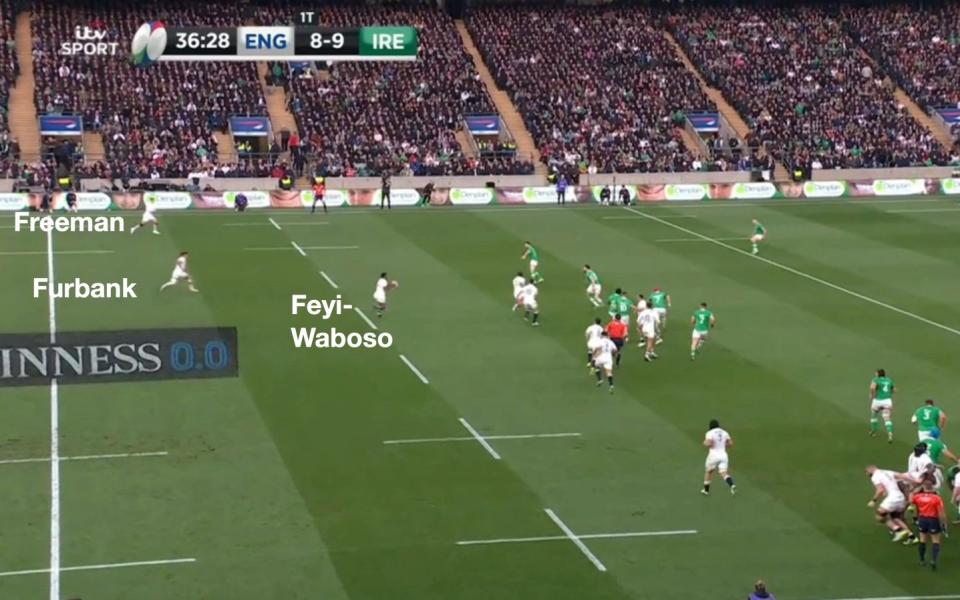
In truth, England might have made their lives easier had they gone through fewer phases around halfway. In this instance, from a Conor Murray kick…
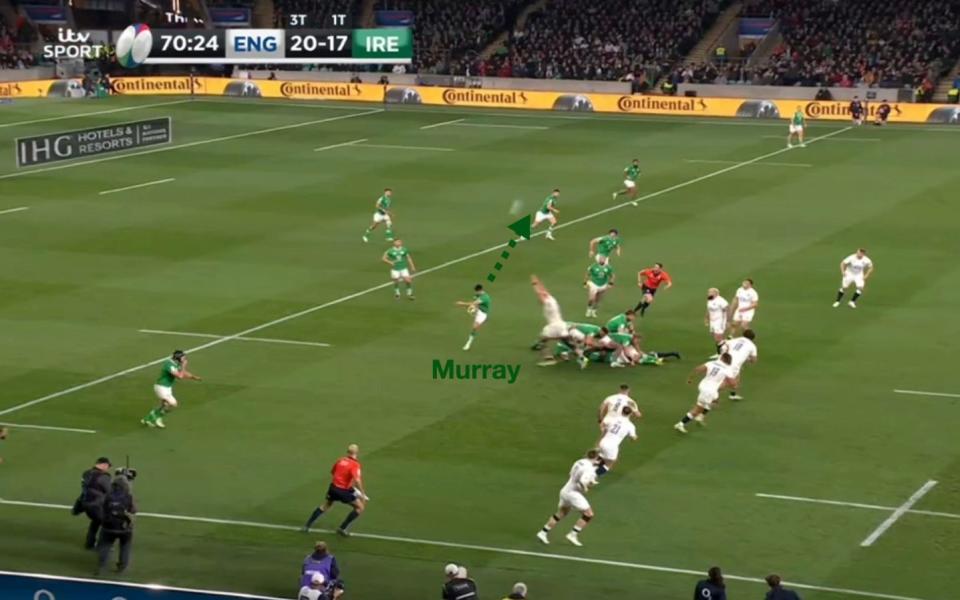
…Furbank counters and is engulfed, giving away a second penalty for holding on:

It was to his credit, and again emblematic of the perseverance shown by England, that Furbank kept coming. By working into a second-receiver slot behind Marcus Smith here…
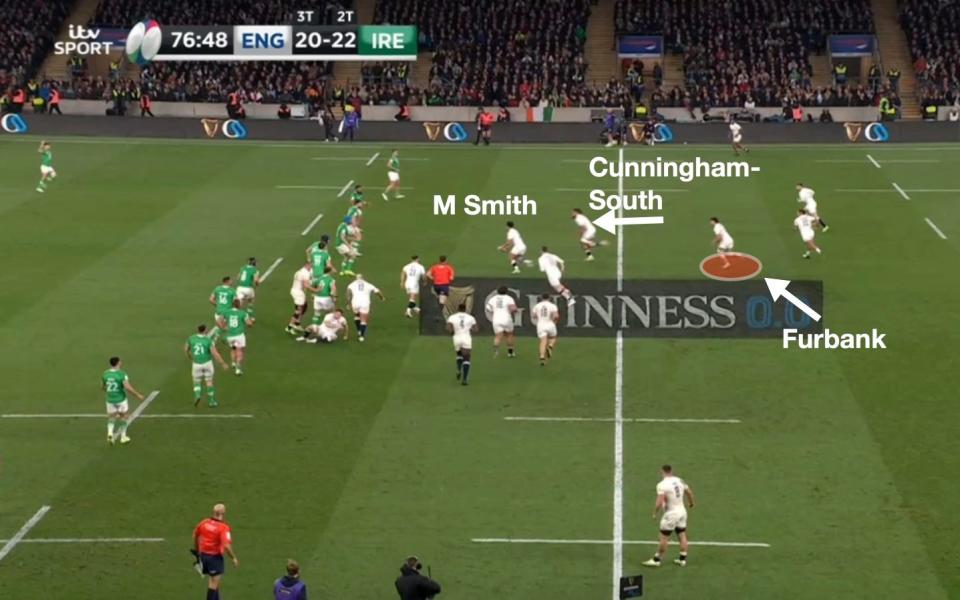
… he creates space for Chandler Cunningham-South as the lead runner:

Watch his work-rate here, too, as Freeman seems to be in danger of being held up. Furbank hits the tackle and helps force his fellow Northampton Saint to ground:

Furbank scurried close to the try-line prior to Smith’s dropped goal at the death, too.
All things considered, his performance felt hugely significant. It repaid the faith of his head coach and vindicated the bold direction that England are travelling in, not to mention the players’ insistence that they have been working on their attack in training.
It is worth reiterating that Borthwick picked Smith at full-back for a World Cup quarter-final. Borthwick’s reputation for caution and conservatism is arguably overblown. That said, Freddie Steward is sure to add to his 33 caps when team tactics call for his skills. He was excellent against Wales.
But, as Borthwick suggested before the weekend, England will continue to improve with greater cohesion and more time together. Furbank, surely now his front-line full-back, has proved as much.
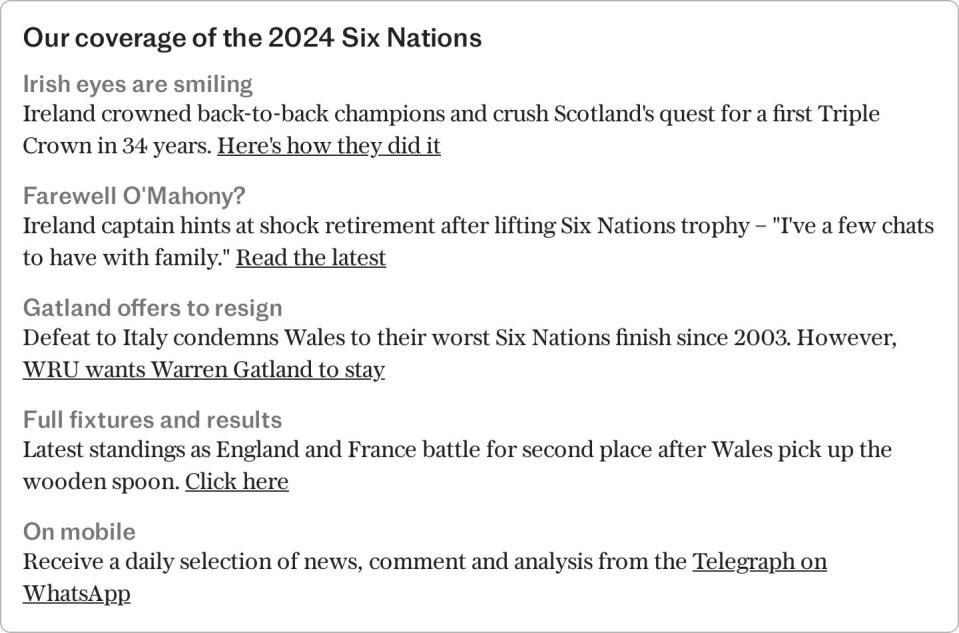

 Yahoo Sport
Yahoo Sport 



































































